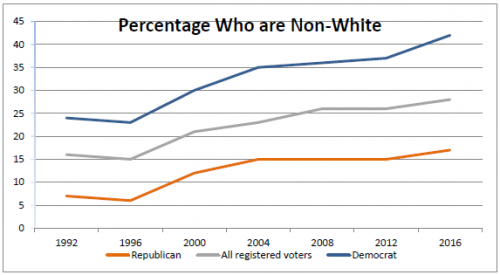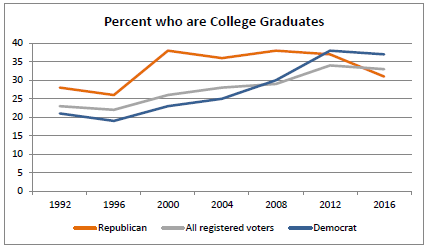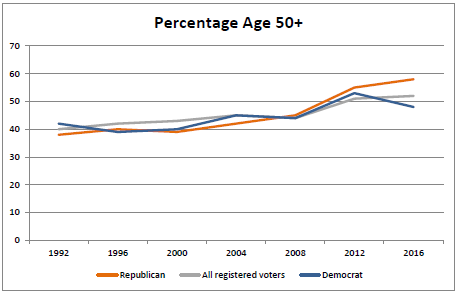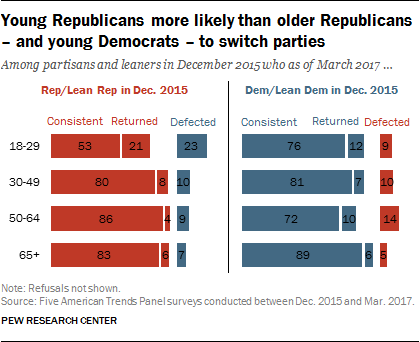How partisan voters have changed since 1992
There have been profound changes in age, religion, race and education between the parties over the past 25 years.
It has been nine months since the 2016 Presidential election and the United States of America continues to remain divided by political party and ideology. How can a nation that needs to unite and find common ground heal when it continues to move further and further apart politically?
The Pew Charitable Trust has been following changes in voter demographics over the last 25 years. Voters have become more racially diverse, better educated, less religious and older. These shifts have reshaped the Democratic and Republican Parties, but in quite different ways. The Democrats have seen notable changes, while the Republicans have, more or less, stayed the same. The following four demographic charts will explain how these changes have affected the parties.
- Nonwhites are increasing as a share of all registered voters. Between 1992 and 2016, the increase was from 16 percent to 28 percent. Of this increase, it has been more dramatic among Democrats than Republicans. The increase of nonwhite voters in the Democratic Party was 18 percentage points, from 24 percent to 42 percent. While the nonwhite share of Republican voters is up six percentage points, from 7 percent to 13 percent in the same time frame.

- Americans are also becoming better educated than in the past. Between 1992 and 2016 all voters with a college degree increased from 23 percent to 33 percent. The share of Democratic voters with a college degree is up 16 percentage points from 21 percent to 37 percent. Meanwhile the share of Republican voters that hold a college degree have risen by three percentage points, from 28 percent to 31 percent.

- When it comes to religion, the fastest growing group of people are the religiously unaffiliated who do not believe in organized religion and call themselves atheist, agonist or nothing in particular. Overall this group has risen 13 percentage points over the last 25 years from 8 percent to 21 percent. Democrats have accounted for a 19 percent shift from 10 percent to 29 percent and the Republicans for six percent from 6 percent to 12 percent.

- The United States has grown older over the past 25 years. In 1992 the average age was 40 and in 2016 it was 52. In the Democrat Party the shift in age has increased by six years from 42 to 48, while in the Republican Party the average has increased by 20 years from 38 to 58 years.

These changes have had more of an effect on the Democrat Party than the Republican Party. The result is two parties that look very different than they did 25 years ago. What will this mean for the future of these two parties moving forward?
The Pew Research Center has gathered some recent data that attempts to shed some light on this question. They tracked voters’ behavior through five separate surveys between Dec. 2015 and March 2017 and asked which political party voters belonged to and how committed they were to the party. The article synopsis can be found at this link, but the gist of the article reported that about 10 percent of Republicans and Democrats “defected” from their parties to the opposing party during this period. They also found that those who switched parties were less politically engaged than people who stayed with their parties.
Of the 10 percent that defected, young republican/leaning republican were the group that were most likely to defect with 23 percent and did not come back. The second group that defected and did not come back were democrat/leaning democrat aged 50-64 with 14 percent. The rest of the age groups consistently fell within a small 5 percent to 10 percent range. The chart below provides the demographic details of this part of this study.

The analysis above is based on those who identify with a party, as well as those who lean toward a party. Most of those that initially did not identify as Republicans or Democrats remained unaffiliated.



 Print
Print Email
Email


